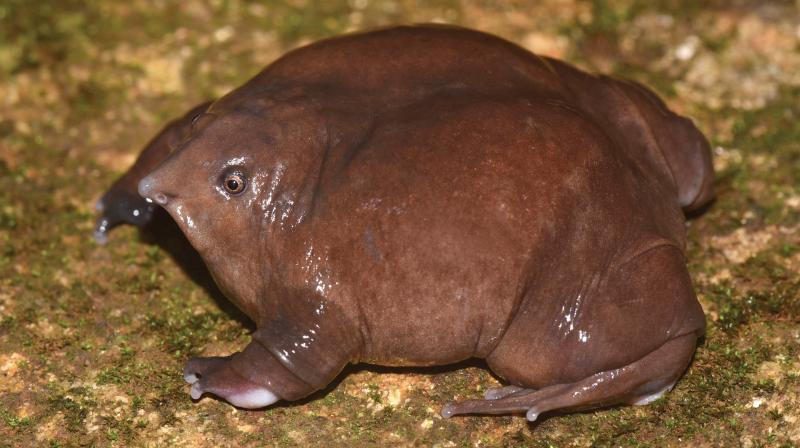Thrissur: Purple frog, new contender for state amphibian
Purple frogs stay underground and comes only once in a year to lay eggs in seasonal streams during the pre-monsoon rains.

Thrissur: A proposal to make ‘purple frog’ Kerala’s state amphibian has been submitted before State Wildlife Advisory Board.
Purple frog is one of only two species in the family Nasikabatrachidae and is endemic to the Western Ghats. The species has been evolving independently for around 100 million years, which adds to its significance and the need for conservation.
Last year, ‘Budha Mayoori', scientifically known as Papilio budha, was declared as the state butterfly of Kerala.
Purple frogs stay underground and comes only once in a year to lay eggs in seasonal streams during the pre-monsoon rains.
The timing of laying eggs and the beginning of the monsoon are crucial for this frog species as the eggs need to be submerged in the shallow water in the streams after the summer rains. For a week the eggs need to remain submerged in water for the tadpoles that emerge to flow down the stream in the water current after monsoon kicks off, say researchers.
“It is one of the most popular frogs in the world and can act as an ambassador for amphibian conservation. The species has been spotted in Kerala in the seasonal streams starting from Ashambu Hills in southern Kerala to Wayanad in northern Kerala. As it comes out from under the ground that too only for a day, it is also called Mahabali frog which alludes to the mythical king,” said Sandeep Das, a research scholar with Kerala Forest Research Institute, who has placed the proposal before the Board.
Mr Sandeep says that the molecular evidence had found the purple frogs to be most closely related to a family of tiny frogs only found on the Seychelles which makes it a living evidence proving India was part of Africa earlier.
Purple frog is listed as endangered by the International Union for Conservation of Nature Red List, and is threatened by deforestation from expanding cultivation.
“The species has very specific breeding sites and its specialised breeding biology makes it vulnerable to habitat loss and change. The majority of locations where purple frog is found occur outside the protected area network and some breeding sites have been damaged by the construction of check dams which aim to control water flow during heavy monsoons,” he added.

